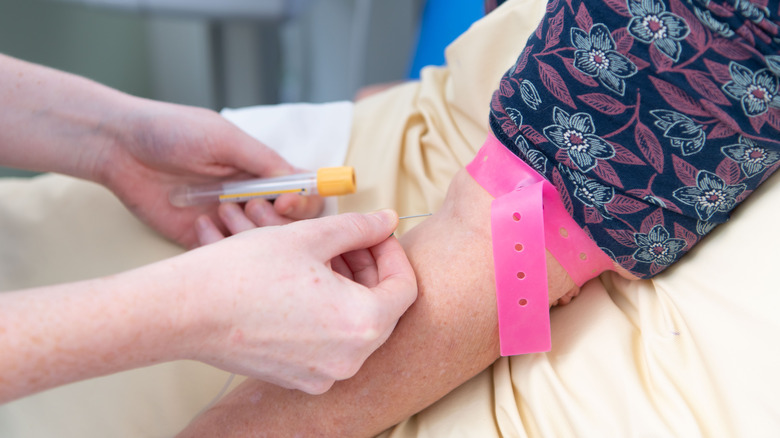What Is A Normal Platelet Count?
Platelets are the cells in our blood that help heal damaged blood vessels, according to Johns Hopkins Medicine. They're necessary for survival, and a normal platelet count is critical. But what if our count is too low or too high?
Platelets are literally shaped like plates when they're not active, but when the blood vessels signal the need for help, they transform into octopus-shaped organisms with arms for healing the broken blood vessels (via Johns Hopkins Medicine). They're the smallest blood cells and can only be viewed under a microscope. Without platelets in our blood to bind together and form clots at the sites of injuries, we could bleed out. "When you get a cut, for example, the platelets bind to the site of the damaged vessel, thereby causing a blood clot," said Marlene Williams, M.D., director of the Coronary Care Unit at Johns Hopkins Bayview Medical Center. "There's an evolutionary reason why [platelets are] there. It's to stop us from bleeding."
A count too low or too high could be dangerous
A platelet count can be taken during a normal blood test, usually included when also checking white and red blood cell counts (via Cleveland Clinic). A normal platelet count is between 150,000 and 400,000 platelets per microliter, with a low count being less than 150,000 and a high count above 400,000. Though platelets are tiny, a count that's too low or too high could be a sign of a serious condition.
A low platelet count means that the blood is less likely to clot, per the Cleveland Clinic. This can be the result of bone marrow damage from cancer treatments, an enlarged spleen, heavy drinking, certain medications, or hemolytic uremic syndrome, a disease that destroys platelets. Symptoms can include bruising easily, extreme bleeding from small cuts, heavy menstrual bleeding, blood in your vomit, urine, or stool, muscle pain, headaches, and dizziness.
If your platelet count is too high, this means that your blood is clotting too much (via Cleveland Clinic). This can be due to immune system issues, infection, genetic disorders that affect platelet production, or cancer. Symptoms are similar to those of low platelet counts and also can include chest pain, leg swelling, shortness of breath, and tingling in the extremities.


